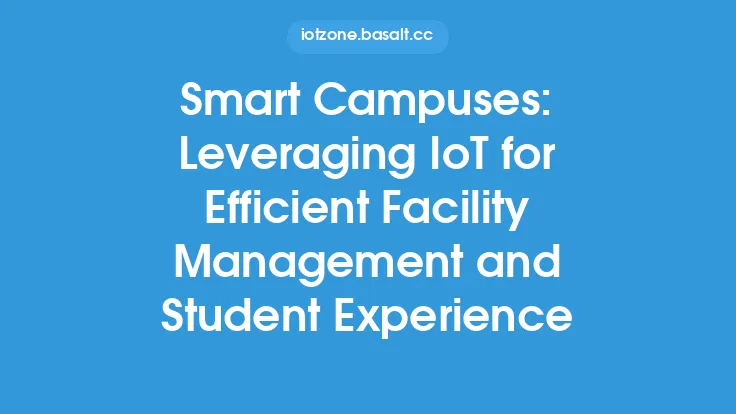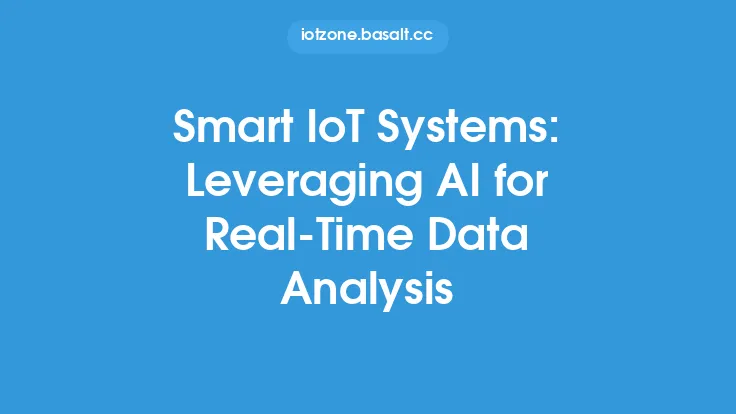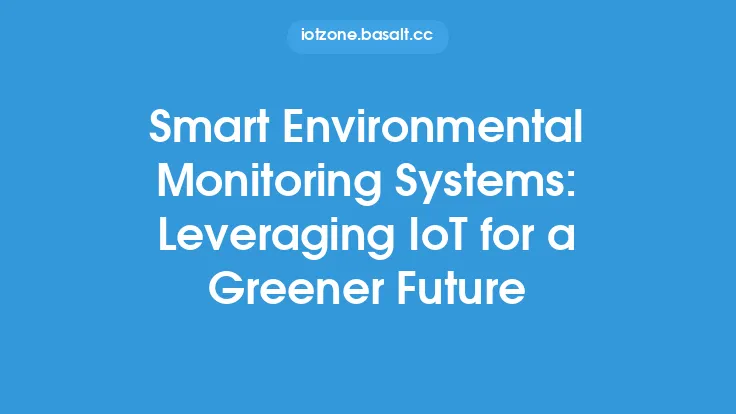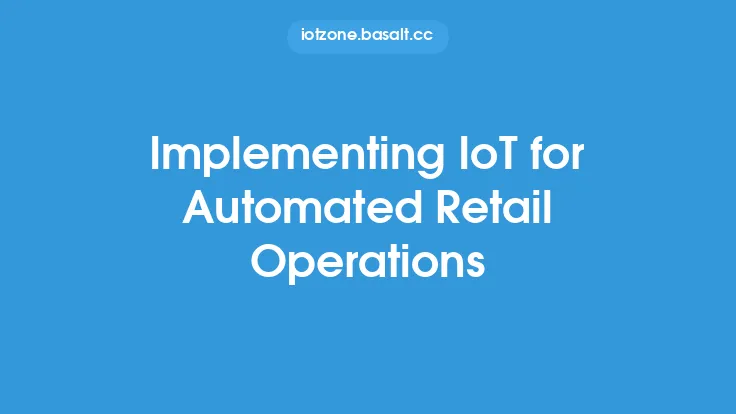The healthcare industry has undergone significant transformations in recent years, driven by advances in technology and the need for more efficient and effective patient care. One of the key drivers of this transformation is the Internet of Things (IoT), which has the potential to revolutionize the way hospitals operate. By leveraging IoT technologies, hospitals can streamline their operations, improve patient outcomes, and reduce costs. In this article, we will explore the concept of smart hospitals and how IoT is being used to improve hospital operations.
Introduction to Smart Hospitals
A smart hospital is a healthcare facility that uses advanced technologies, including IoT, to improve the quality and efficiency of patient care. Smart hospitals use a network of connected devices, sensors, and systems to collect and analyze data, which is then used to make informed decisions about patient care and hospital operations. This can include everything from monitoring patient vital signs and tracking medical equipment to optimizing energy consumption and managing hospital assets.
IoT Technologies Used in Smart Hospitals
There are several IoT technologies that are being used in smart hospitals, including:
- Sensors: Sensors are used to collect data on various aspects of hospital operations, such as temperature, humidity, and air quality. This data can be used to optimize the hospital environment and improve patient comfort.
- RFID: Radio Frequency Identification (RFID) technology is used to track medical equipment, supplies, and even patients. This can help to improve asset management and reduce the risk of lost or misplaced equipment.
- Wi-Fi: Wi-Fi is used to connect devices and systems throughout the hospital, enabling real-time communication and data exchange.
- Bluetooth Low Energy (BLE): BLE is a wireless personal area network technology that is used to connect devices and systems in the hospital. It is commonly used for applications such as wayfinding and asset tracking.
- LPWAN: Low Power Wide Area Network (LPWAN) technologies, such as LoRaWAN and Sigfox, are used to connect devices and systems over long distances, enabling the creation of wide-area networks that can cover entire hospital campuses.
Applications of IoT in Smart Hospitals
There are many applications of IoT in smart hospitals, including:
- Asset tracking: IoT technologies such as RFID and BLE are used to track medical equipment, supplies, and other assets. This can help to improve asset management and reduce the risk of lost or misplaced equipment.
- Patient monitoring: IoT sensors and devices are used to monitor patient vital signs, such as heart rate, blood pressure, and oxygen saturation. This data can be used to improve patient outcomes and reduce the risk of complications.
- Energy management: IoT sensors and systems are used to optimize energy consumption in the hospital, reducing waste and improving efficiency.
- Wayfinding: IoT technologies such as BLE and Wi-Fi are used to provide wayfinding services to patients and visitors, helping them to navigate the hospital more easily.
- Infection control: IoT sensors and systems are used to monitor and control the spread of infections in the hospital, improving patient safety and reducing the risk of outbreaks.
Benefits of IoT in Smart Hospitals
The use of IoT in smart hospitals has many benefits, including:
- Improved patient outcomes: IoT technologies can help to improve patient outcomes by enabling real-time monitoring and analysis of patient data.
- Increased efficiency: IoT technologies can help to streamline hospital operations, reducing waste and improving productivity.
- Reduced costs: IoT technologies can help to reduce costs by optimizing energy consumption, improving asset management, and reducing the risk of lost or misplaced equipment.
- Enhanced patient experience: IoT technologies can help to improve the patient experience by providing wayfinding services, improving communication, and enabling real-time feedback.
Challenges and Limitations of IoT in Smart Hospitals
While the use of IoT in smart hospitals has many benefits, there are also several challenges and limitations that must be addressed, including:
- Security: IoT devices and systems can be vulnerable to cyber attacks, which can compromise patient data and disrupt hospital operations.
- Interoperability: IoT devices and systems from different manufacturers may not be compatible, which can make it difficult to integrate them into a single network.
- Data management: The large amounts of data generated by IoT devices and systems can be difficult to manage and analyze, which can make it challenging to extract meaningful insights.
- Regulatory compliance: The use of IoT in smart hospitals must comply with relevant regulations and standards, such as HIPAA and FDA guidelines.
Future of IoT in Smart Hospitals
The future of IoT in smart hospitals is exciting and rapidly evolving. As IoT technologies continue to advance and improve, we can expect to see even more innovative applications and use cases in the healthcare industry. Some potential future developments include:
- Artificial intelligence (AI): The integration of AI and machine learning algorithms with IoT devices and systems can enable even more advanced analytics and decision-making capabilities.
- 5G networks: The deployment of 5G networks can provide faster and more reliable connectivity for IoT devices and systems, enabling even more widespread adoption and use.
- Edge computing: The use of edge computing can enable real-time processing and analysis of IoT data, reducing latency and improving responsiveness.
Conclusion
In conclusion, the use of IoT in smart hospitals has the potential to revolutionize the way healthcare is delivered. By leveraging IoT technologies, hospitals can improve patient outcomes, increase efficiency, and reduce costs. While there are challenges and limitations to be addressed, the benefits of IoT in smart hospitals are clear. As IoT technologies continue to evolve and improve, we can expect to see even more innovative applications and use cases in the healthcare industry.





